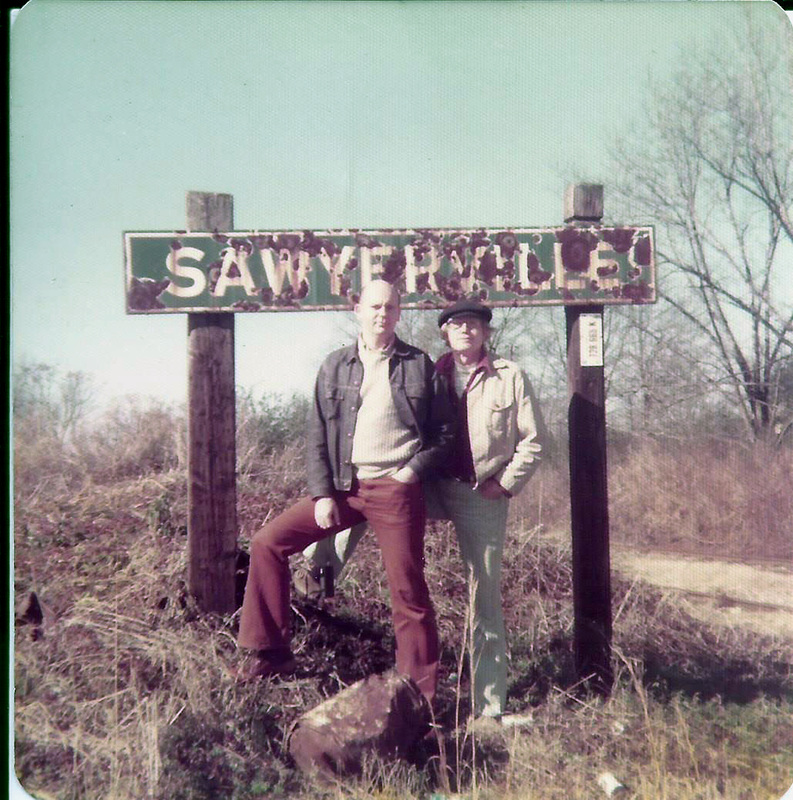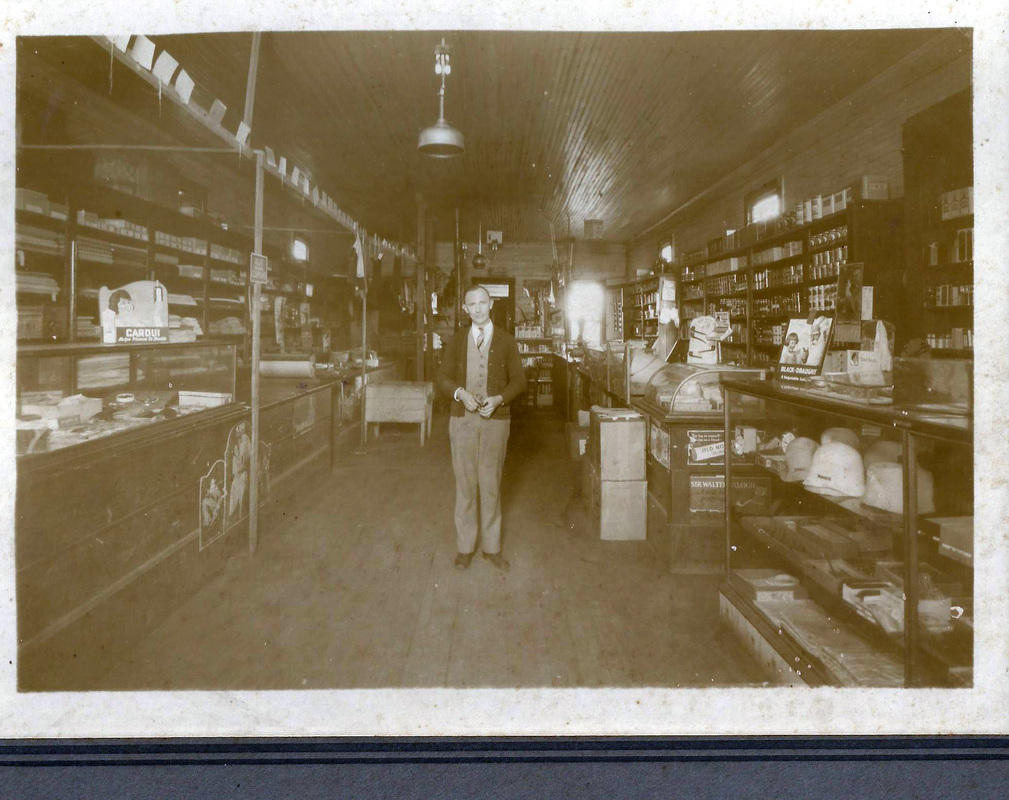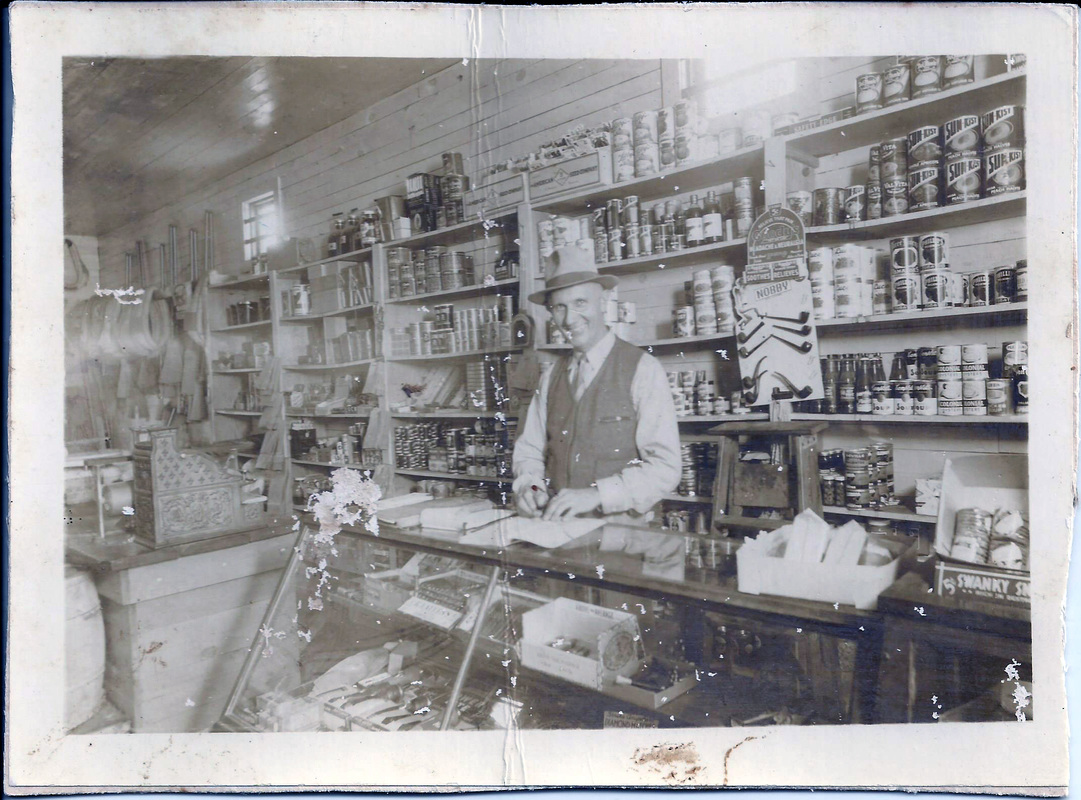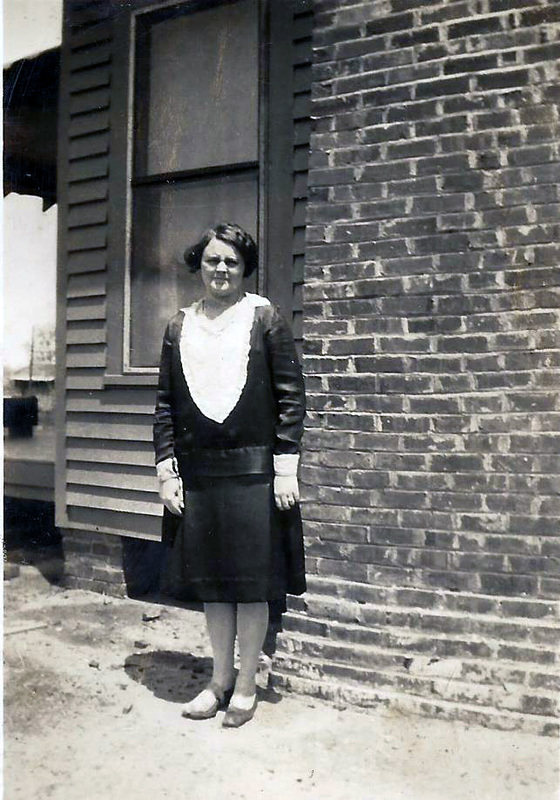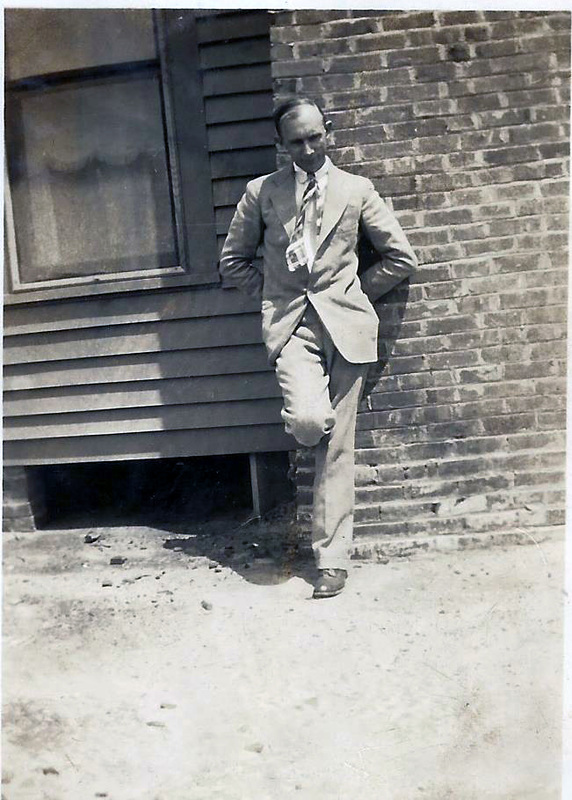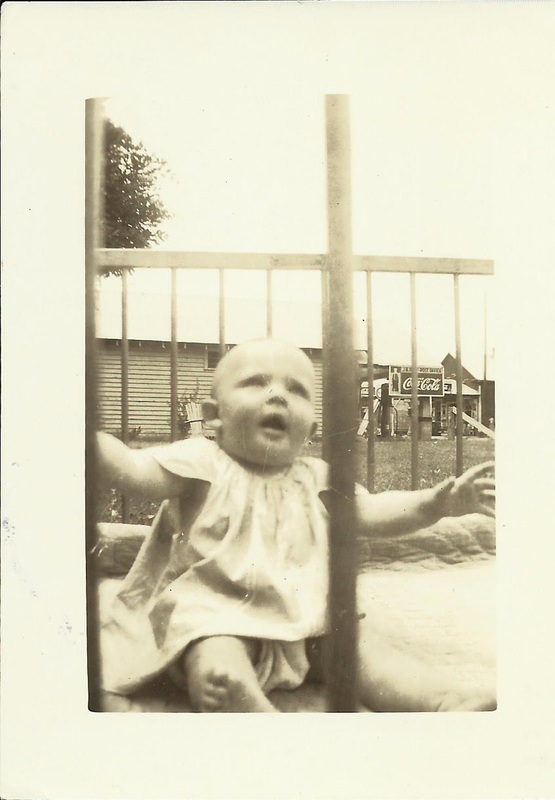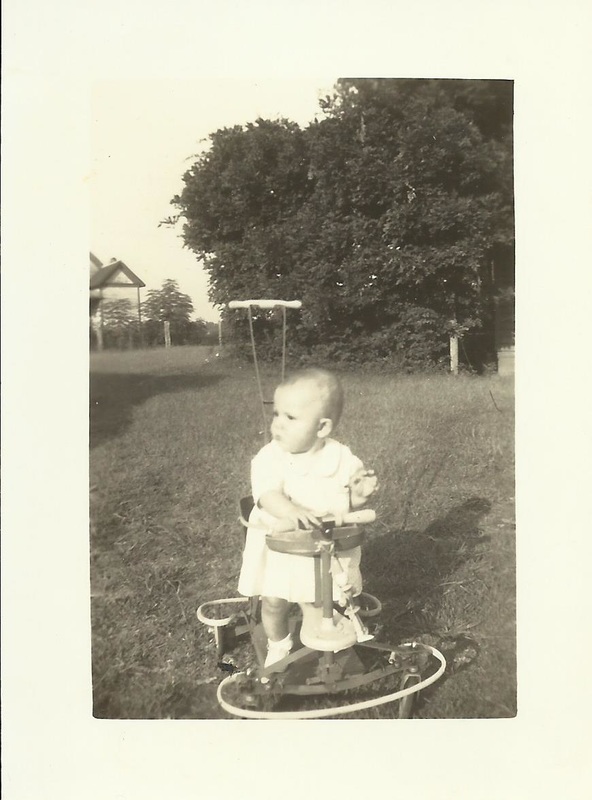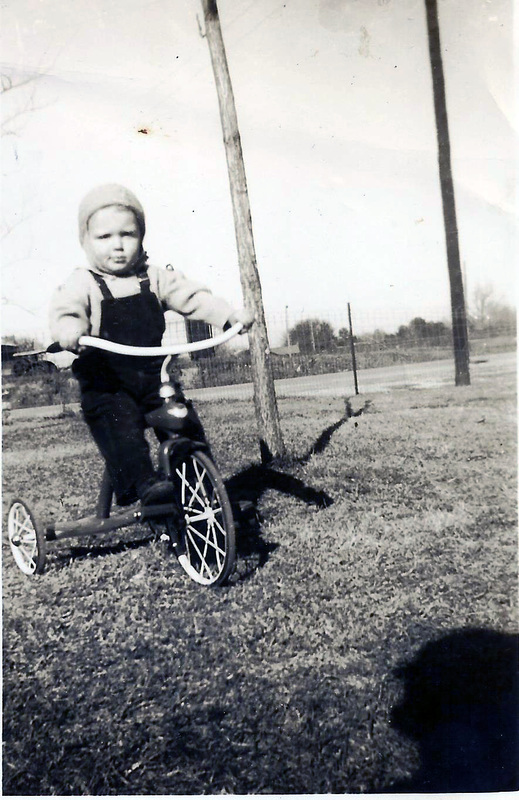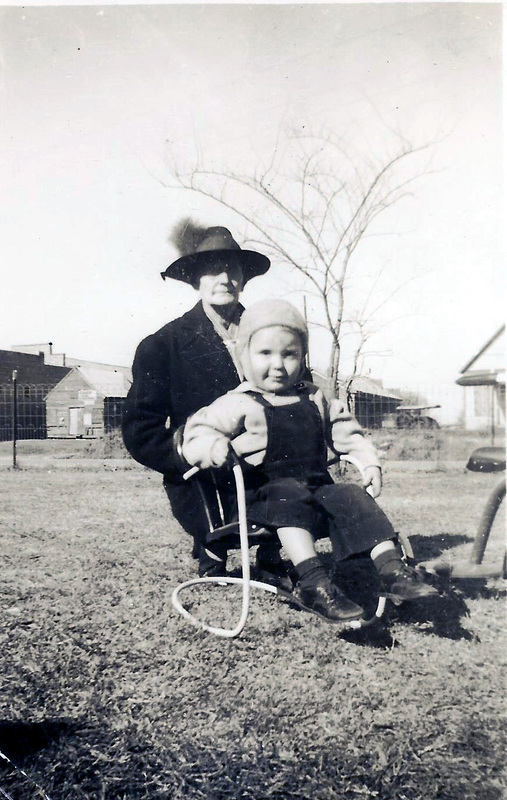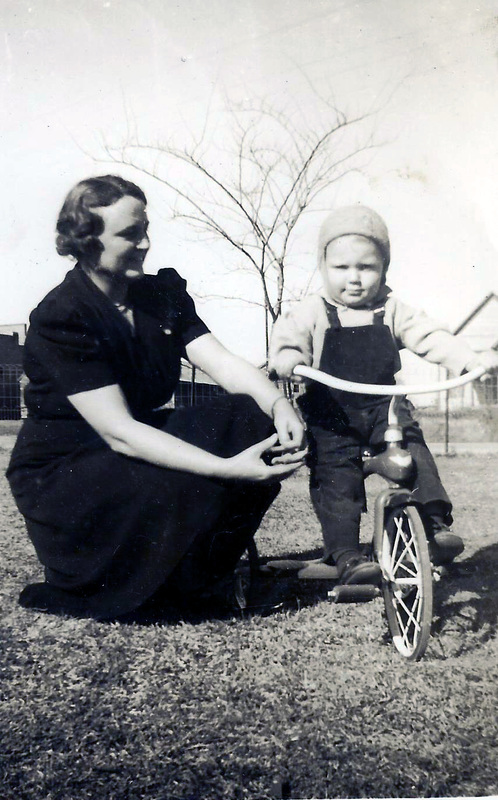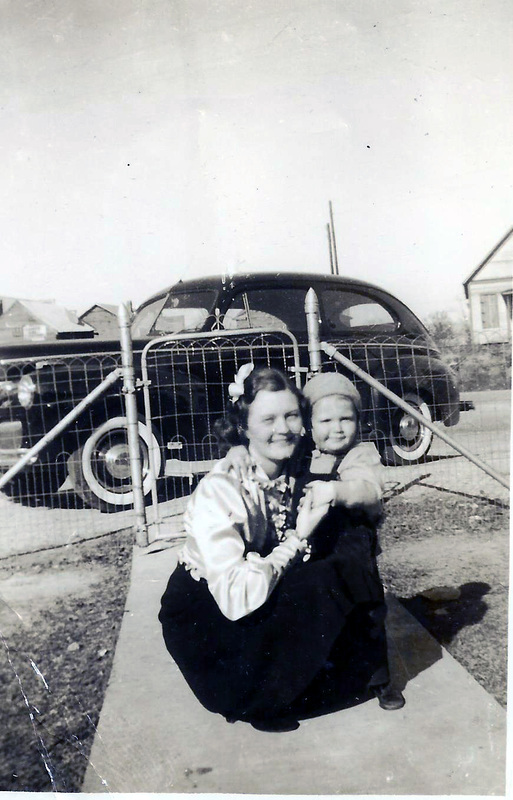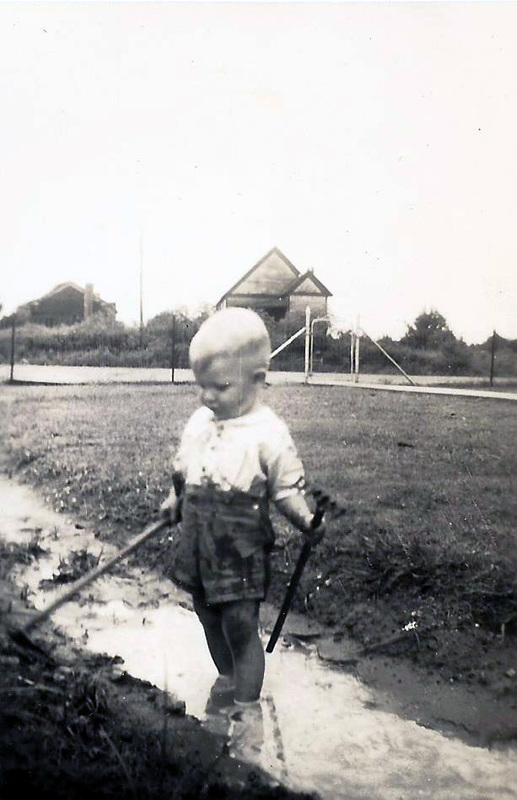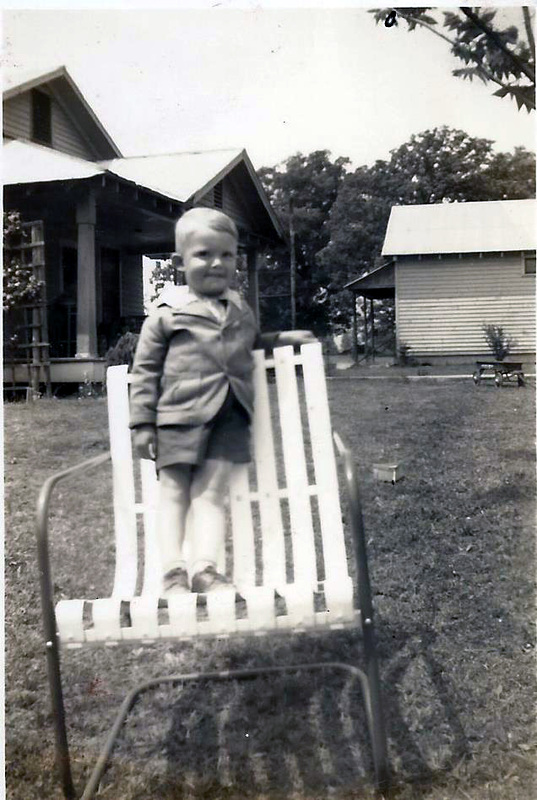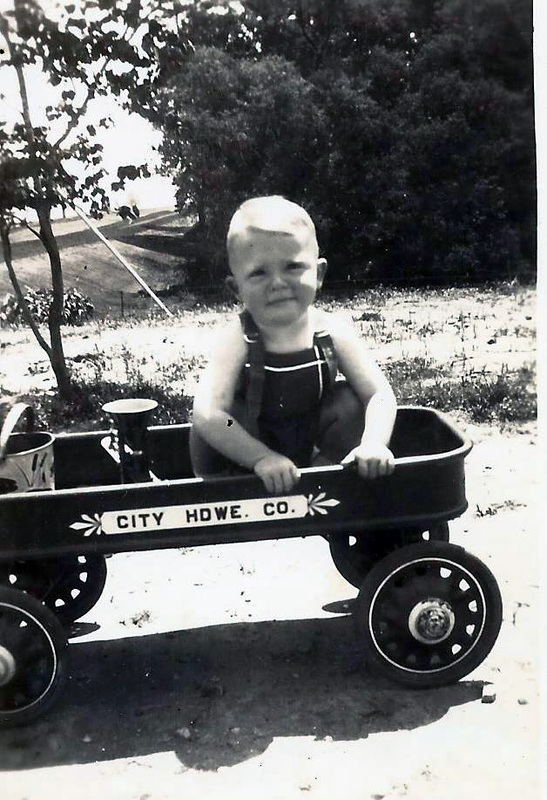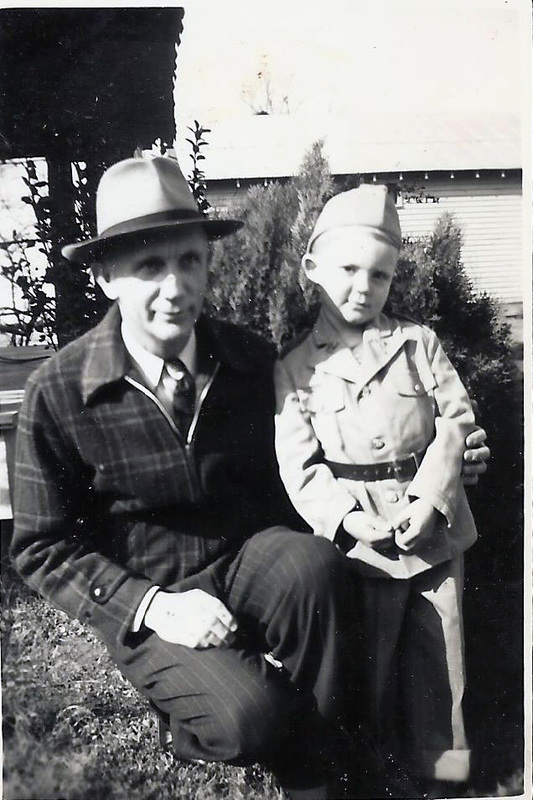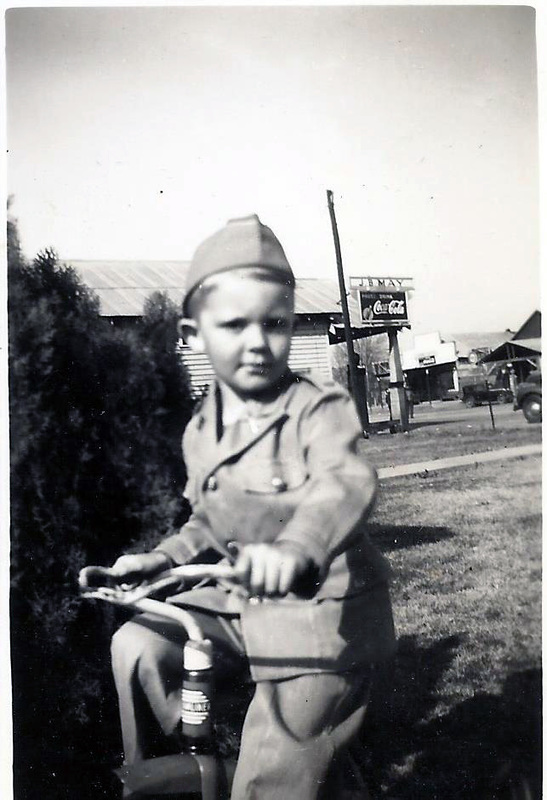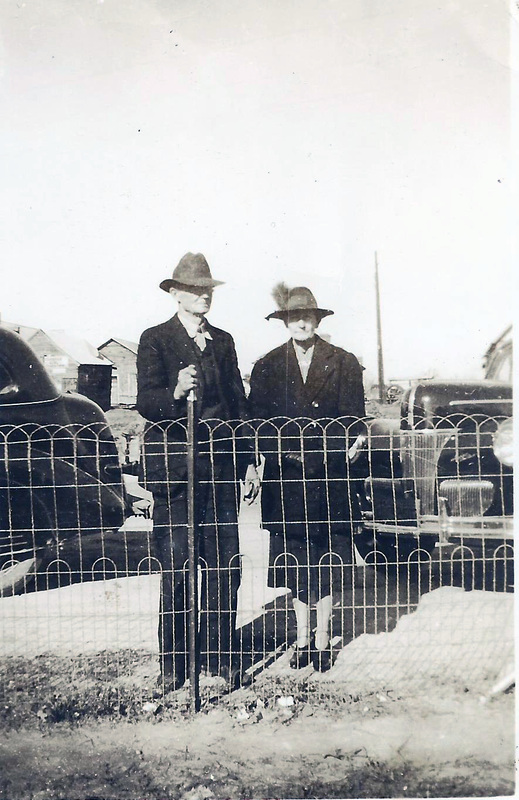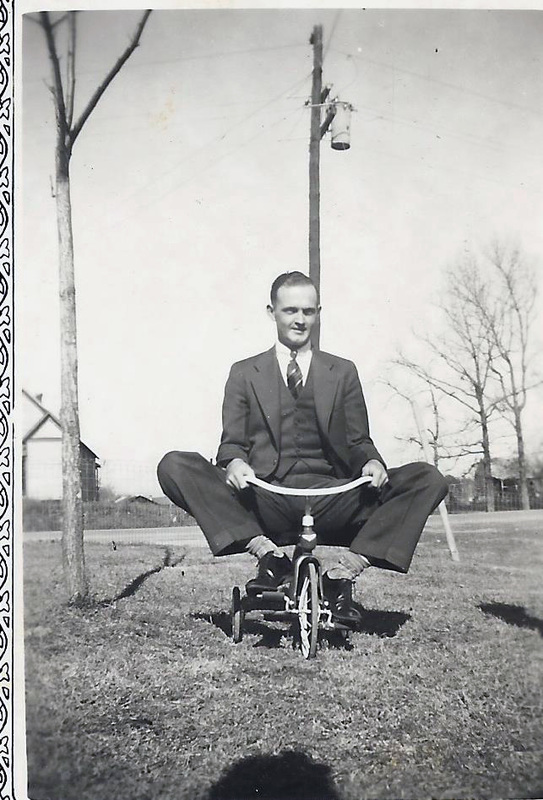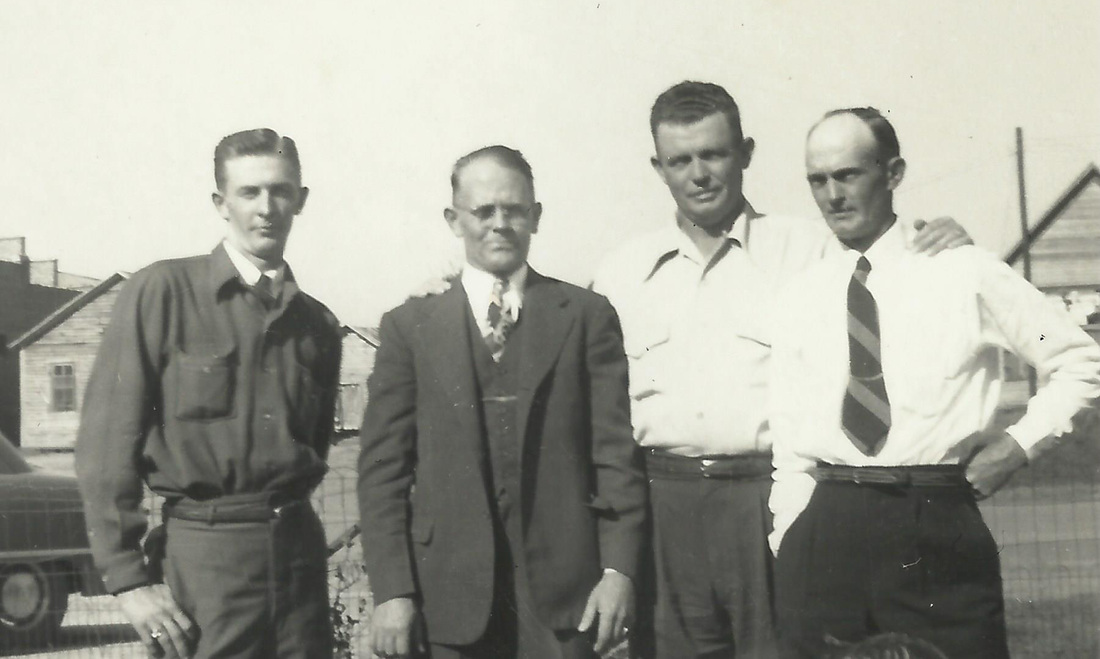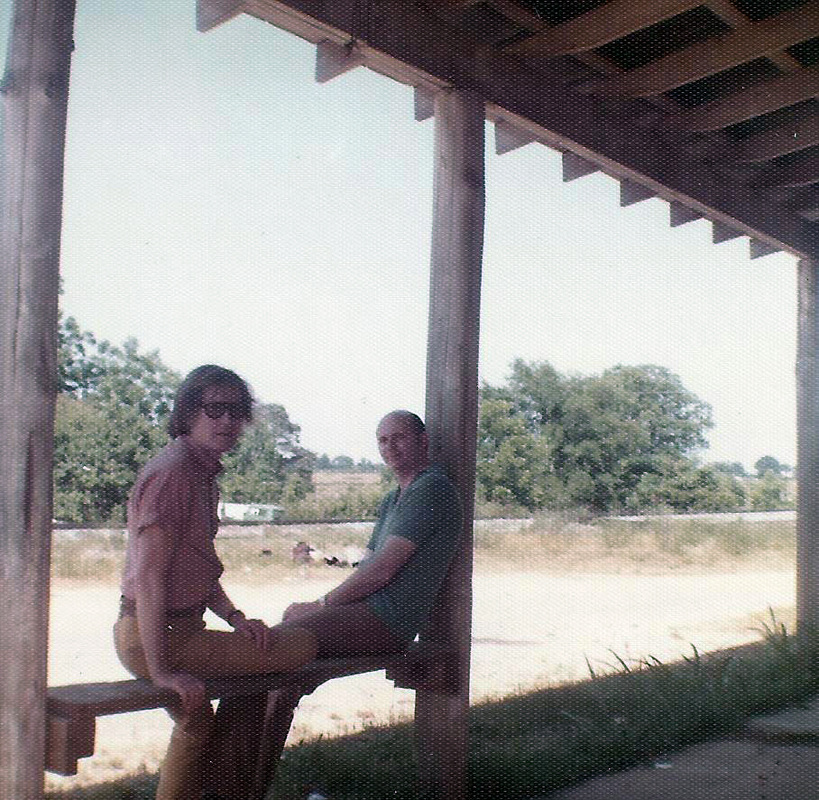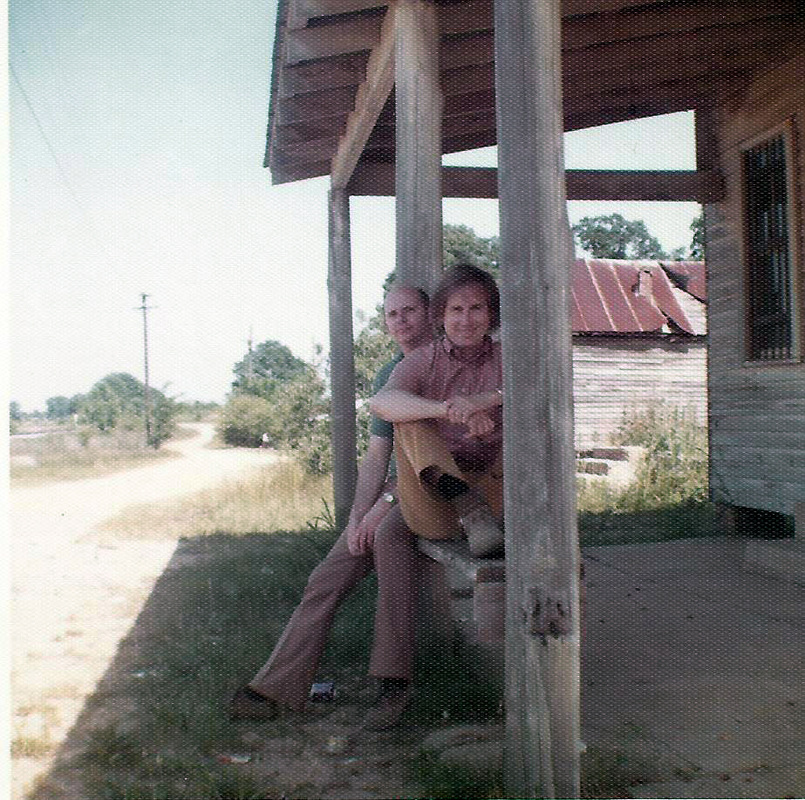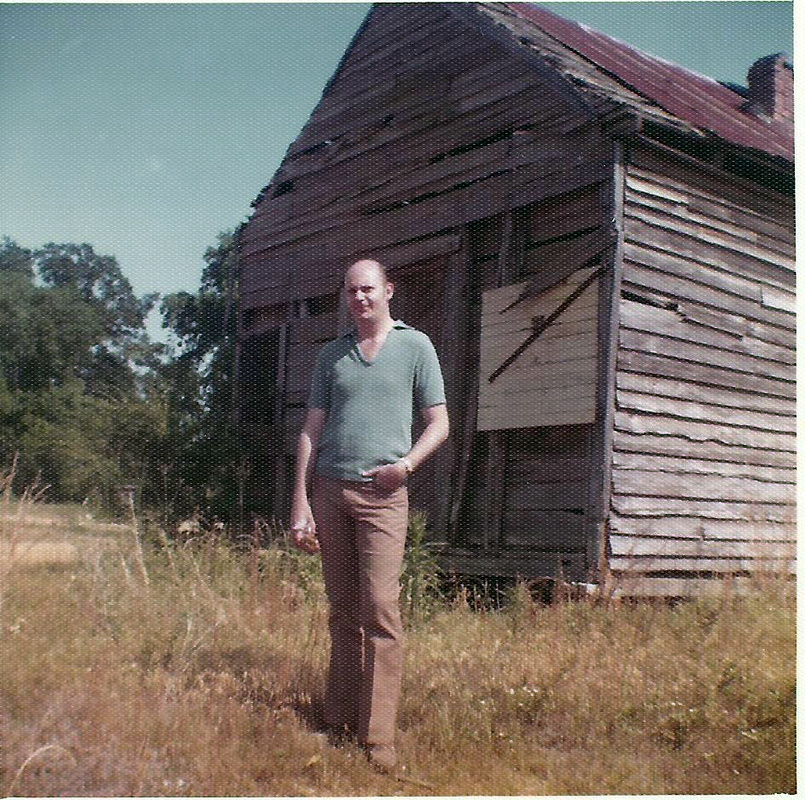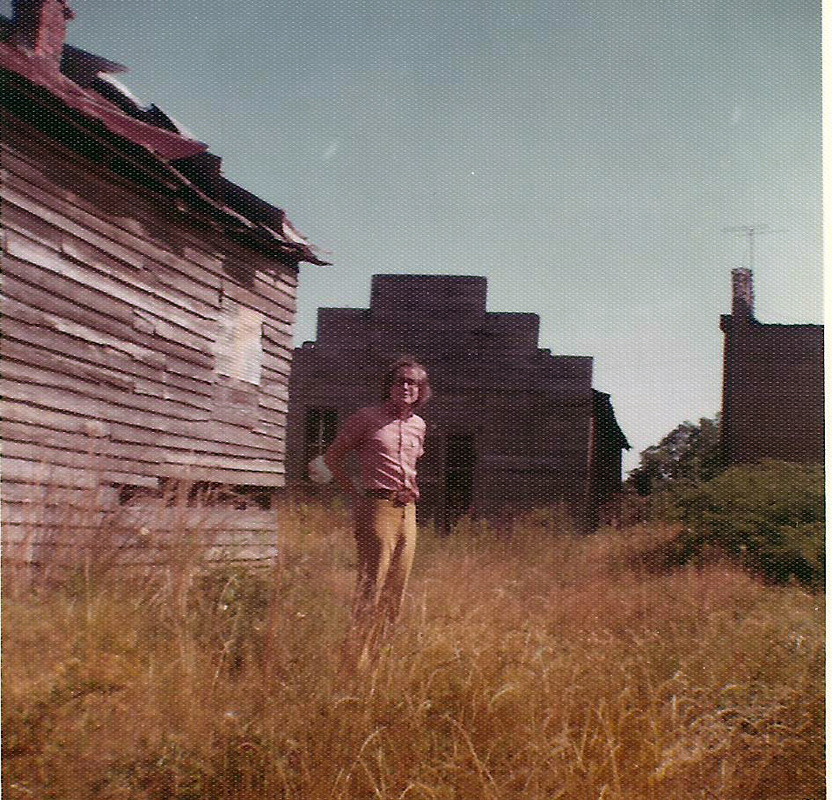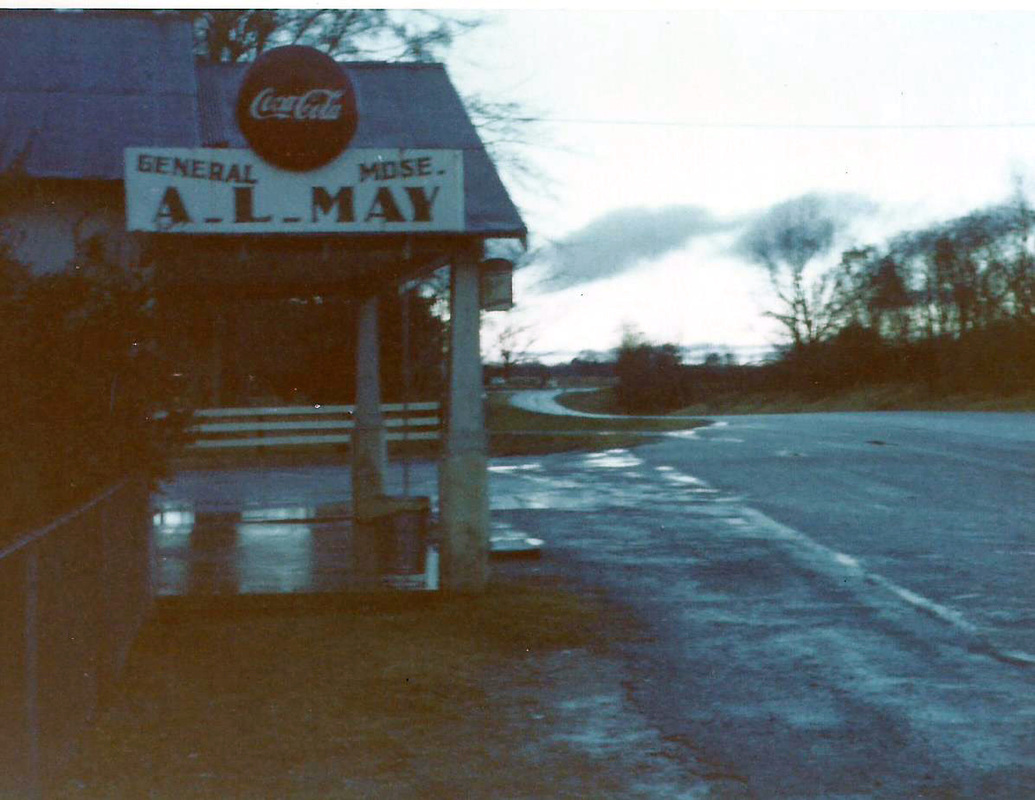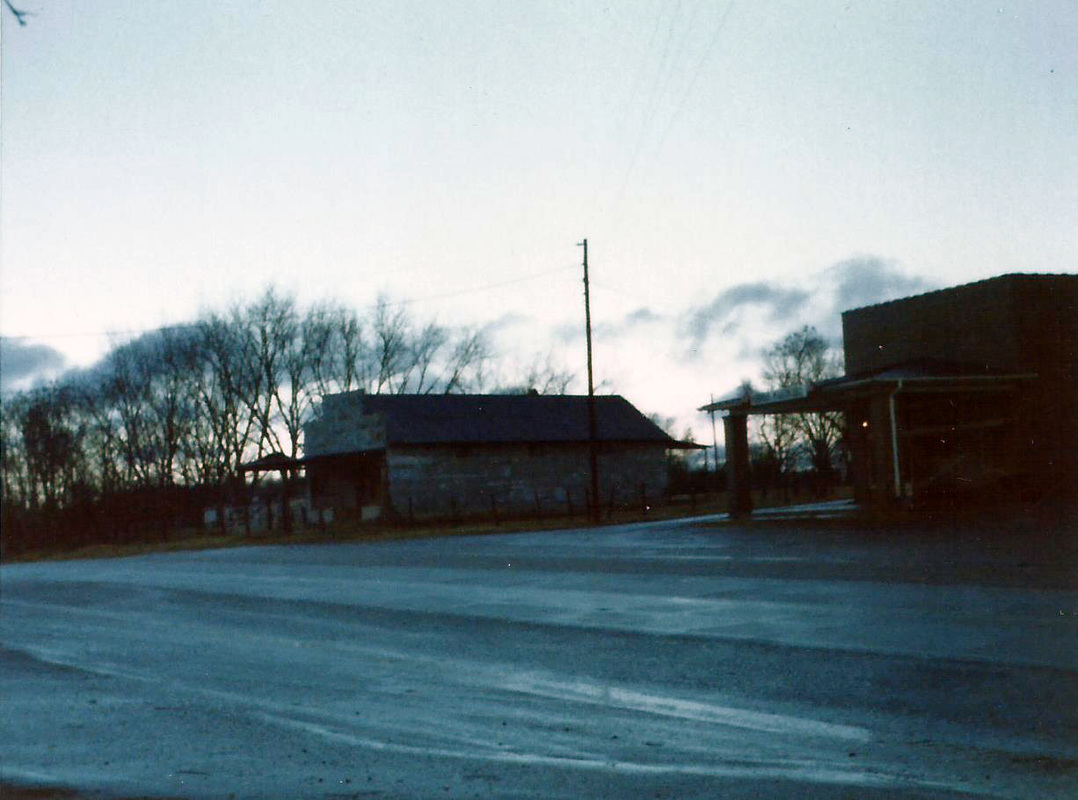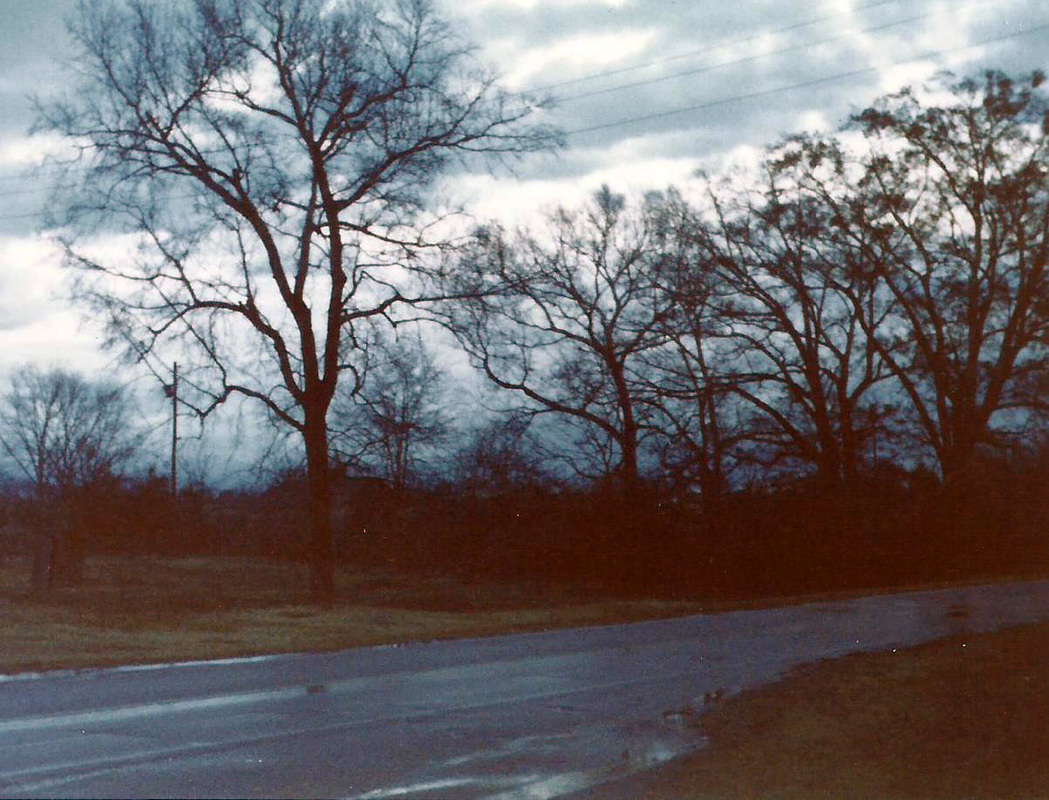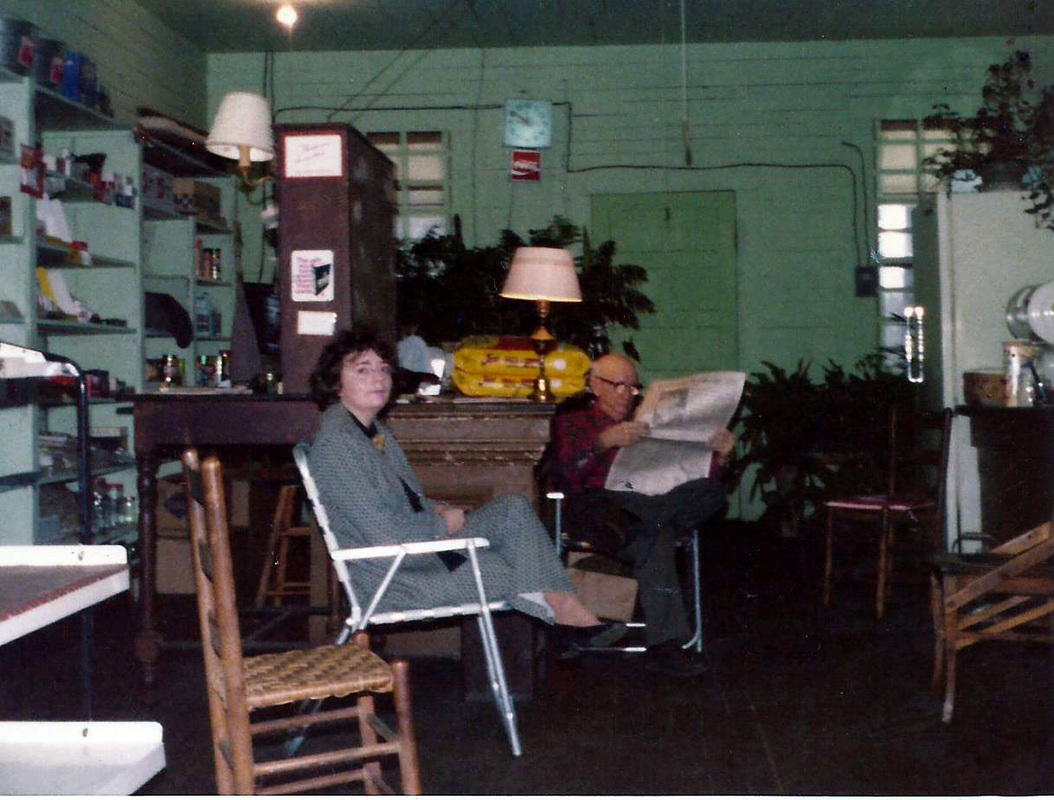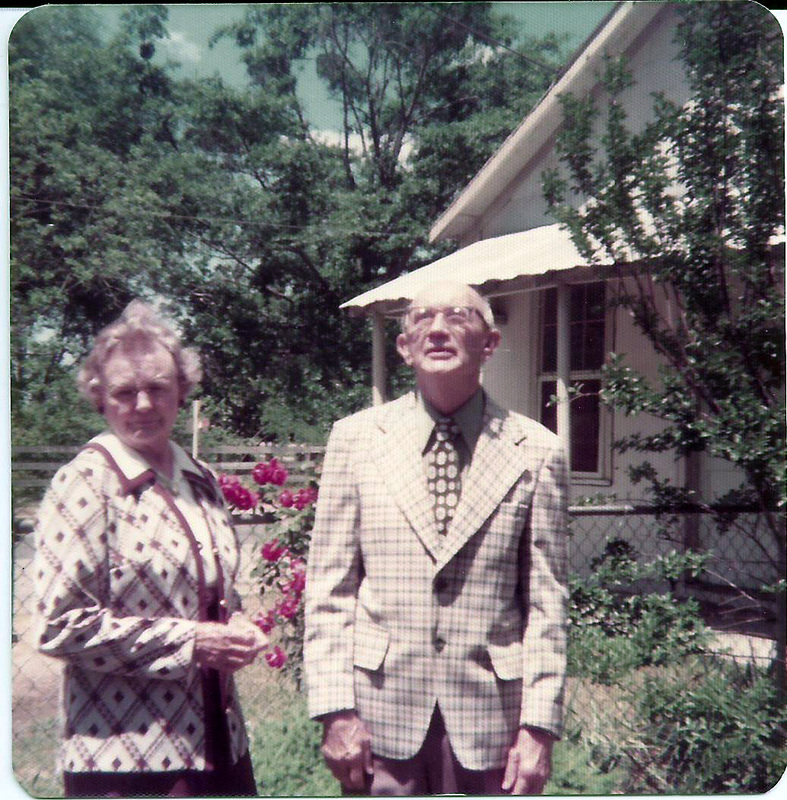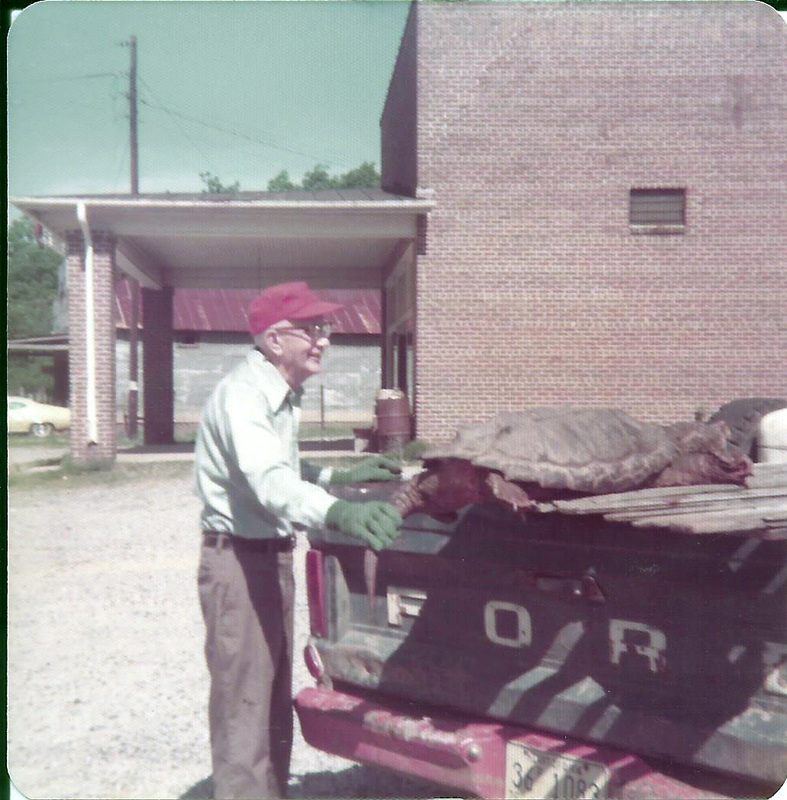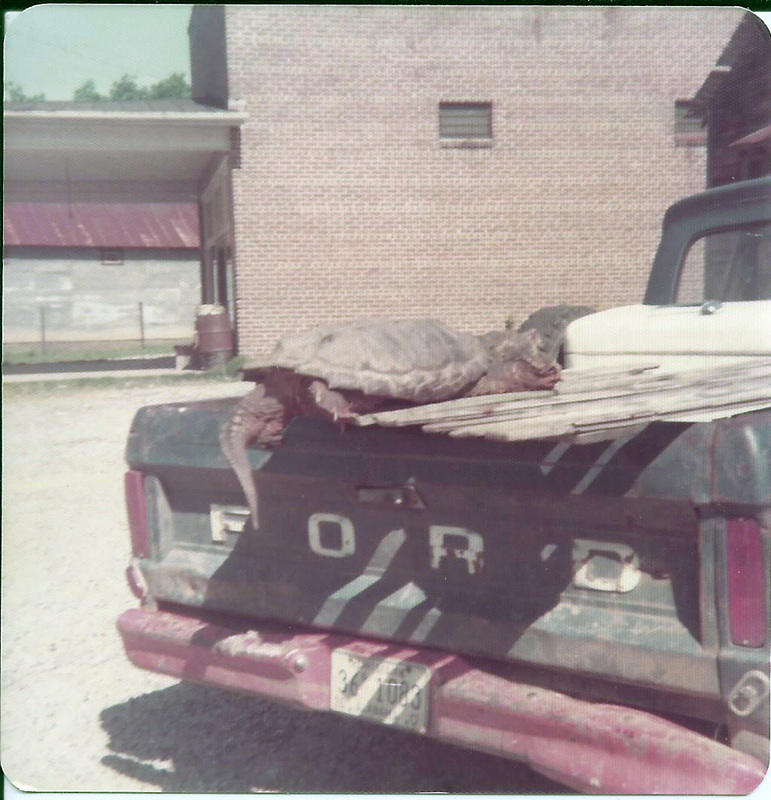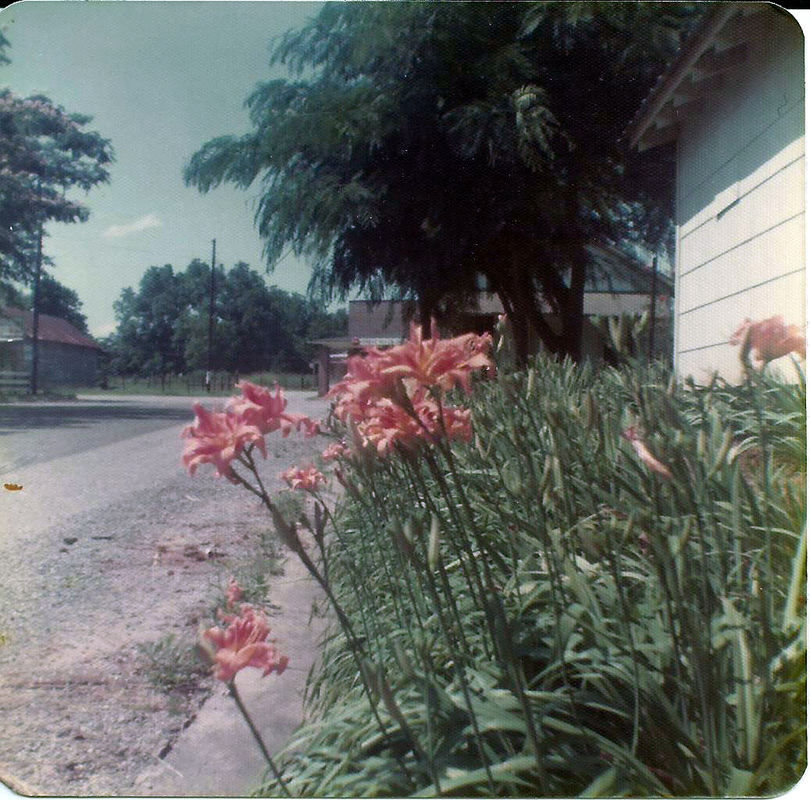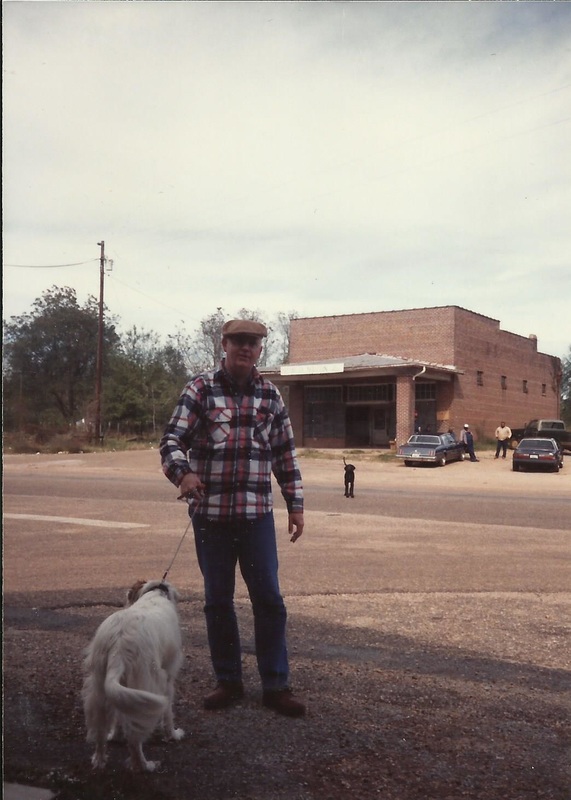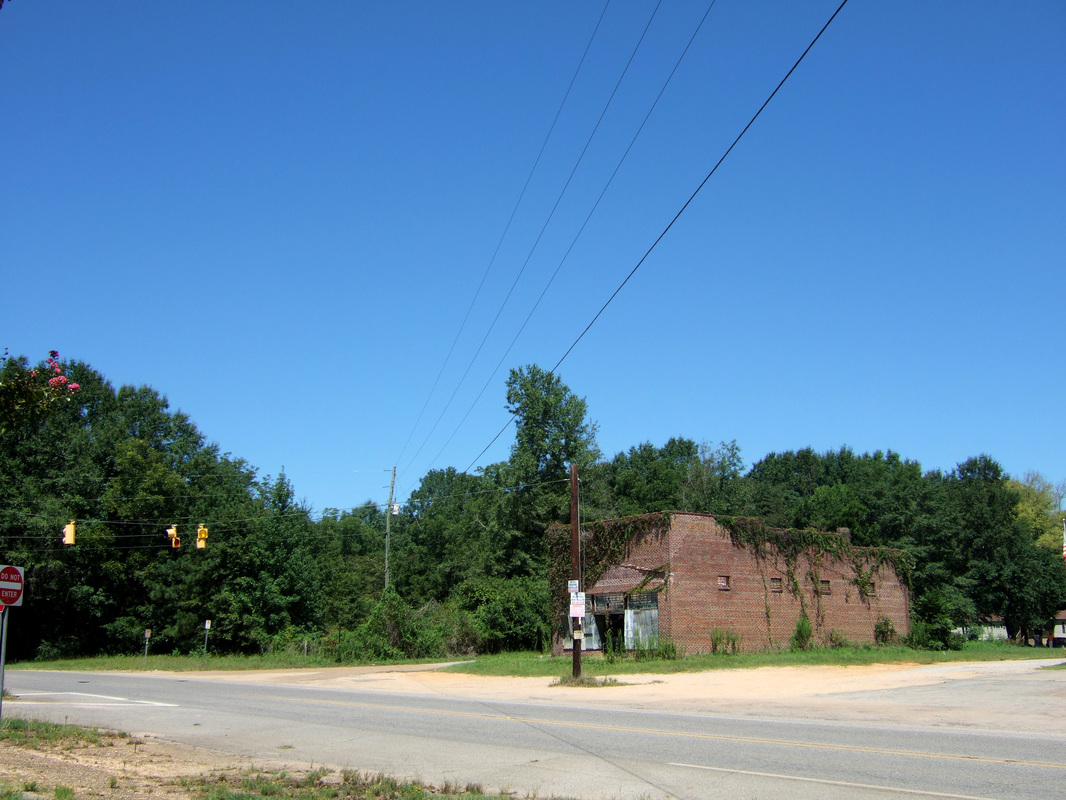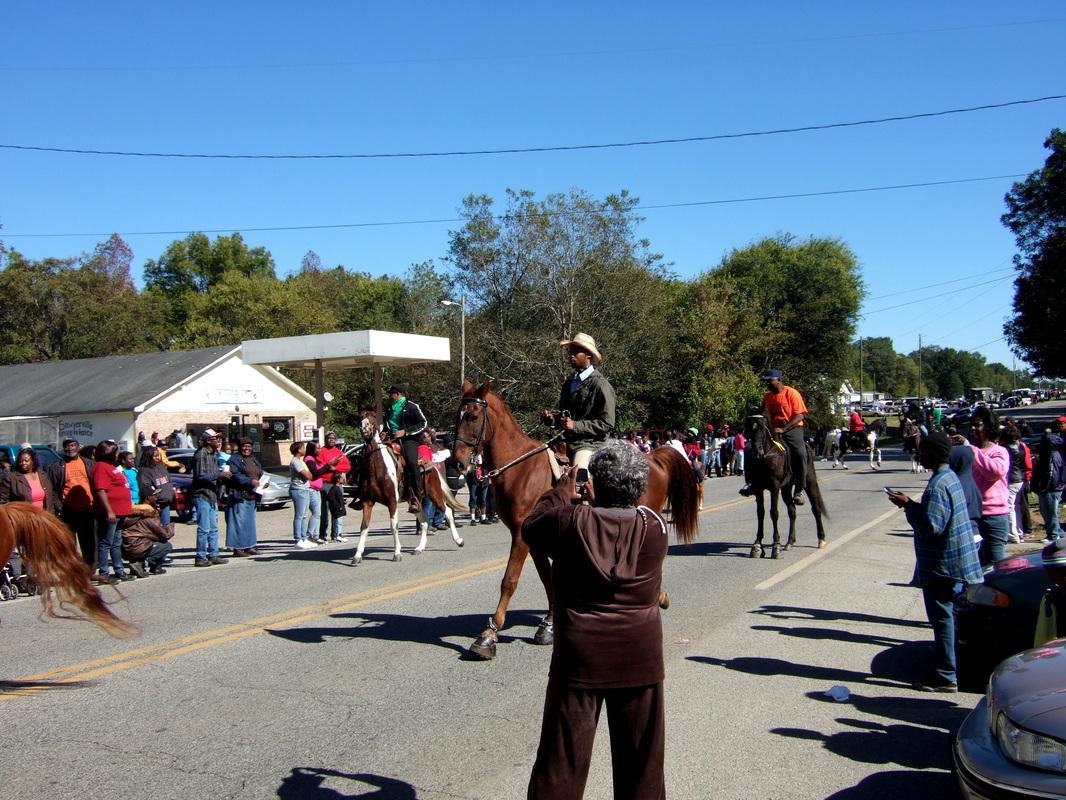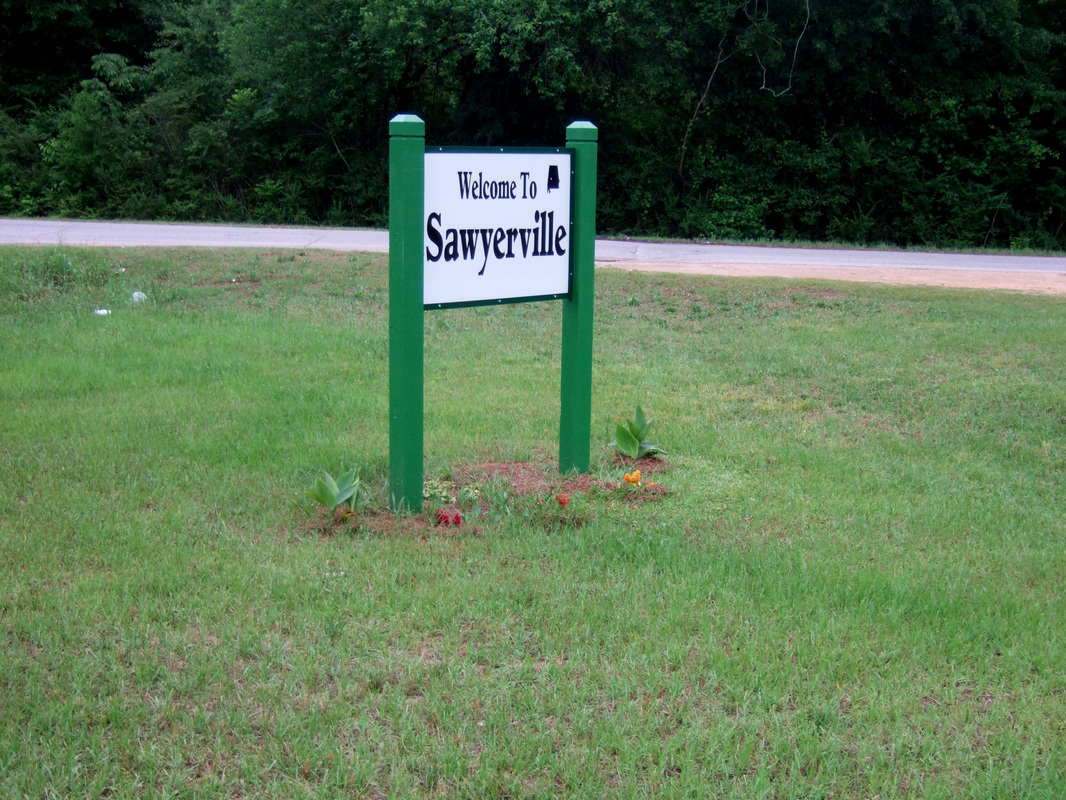|
OLD SAWYERVILLE
That's Jonathan and Tom standing in front of the old Sawyerville sign that stood just across the dirt road from the old train depot, probably in the miod-1970s. The depot was already gone, and this sign soon followed. I wonder where it is today? So much is lost. Here I am trying to recapture something of what has been lost. Back in earlier times you didn't usually take pictures of places, only people. Who cared what Sawyerville looked like? But in going through old photographs in recent years I have found that sometimes Sawyerville itself peeked through the cracks. Now if you'll look over the shoulders of family and friends, not to mention me, you will get some sense of Sawyerville over time. To the best of my ability I'll try to place what follows in chronological order. These are not great works of photographic art, but instead the best I can find to document. All can be enlarged with a click. |
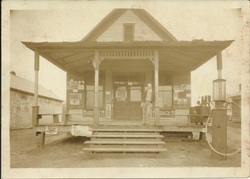
My father is standing in front of his older store, across the highway from the house in which I grew up and now live. To the left is the building that during early lifetime was the juke joint (we called it the Rock-ola) operated by Johnny Pickens, the only black man who ran a business that faced the main highway. This photograph probably dates from the 1920s, and it is possible that my father was still in the store business with his brothers (later on he got full title to that business when the brothers were settling their father's estate). I love the decorative woodwork above the front steps.
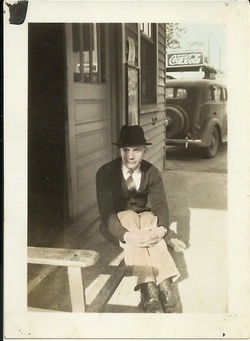
At some point in the late 1920s my maternal grandfather King David Turberville built a house and new store for his daughter and son-in-law across the highway. I'll bet this was the first photograph taken of him in front of his new store. In the background you will see the top of the old filling station that belonged to local resident George Springer. Later on that property was bought by Warren Walton, and he built the house for his family in the large yard. I have the vaguest memory of watching that filling station building being rolled across the highway on logs, but that may be a memory of having been told about it. That building stood near the highway across from my house for some years while I was growing up, used mainly for storage.
And below are photographs of Daddy in his new store. Judging from the cardigan, I'd assume they were taken the same day as this one. That building still stands, and now I use it for storage. The shelves are still there and two of the massive counters. The display cases were sold.
And below are photographs of Daddy in his new store. Judging from the cardigan, I'd assume they were taken the same day as this one. That building still stands, and now I use it for storage. The shelves are still there and two of the massive counters. The display cases were sold.
|
My parents, the proud owners of a new house. That was, of course, a working fireplace back then, providing heat for both the living room and the dining room. It sill stands as a relic of his former use. The porch has not yet been screened, and much later the wood of the house was covered with asbestos siding and later (after my return) by aluminum siding. That looks like old brick even then.
Later on that crawlspace was closed in with concrete blocks to prevent freezing of water pipes. Initially there was no indoor plumbing: we had walking water, not running water. |
|
Little Jonathan makes his appearance on the scene! . I'm penned up and can't go far, but that will change in a few years. I'll be all over Sawyerville. And when I get better wheels I'll even get out of town. Through the bars of the crib, in the distance is Callahan's filling station. Behind me on the stroller is the black church across the highway and a great shot of the wisteria that blocked the sun from the west side of the front porch. It grew on a sturdy frame made from iron pipes.
How I wish I had that Coca-Cola sign! |
How empty Sawyerville looks across the street. Behind that shot of my grandmother Pearl and me, on the far left is M..T. Martin's brick store, and to the right of that the Johnny Pickens's establishment. Just to my right in that shot you can see the old grist mill operated by George Springer, powered by a gasoline generator housed in that old store to its right. On the far right is the building, formerly a store, that during my early years was a black church. (That's my mother and me on the tricycle, my Aunt Louise, her baby sister, with me on the front walk.)
|
Lil' Jonathan playing in the ditch that helped drain front yard. (That ditch is still there, but covered with grass.) Note church in background.
|
Cleaned up for Sunday School. Good view of house and store. No yew tree yet at the back of the stooge: that came a good decade later.
|
In sailor boy suit with Aunt Martha Julia, my mother's middle sister. Porch not yet screened, and I don't recall the vines on the east side of the porch.
|
|
In his little red wagon. Note how new the road looks behind. By now the one-mile stretch through Sawyerville has been paved.
|
He's graduated to army uniform, here with his father. Note that the porch is not yet screened.
|
With May's Store. Across highway, l. to r., Uncle Murray Martin's tin store and Emmet Callahan's filling station.
|
|
Early 1940s. Grandmama And Grandpapa Turberville outside front fence. That's their son Uncle Jimmy perched on my tricycle. The old church is on the left, and that small house you see on the right remained there, with various improvements over the ages, until 2014. It was one of the few houses owned by black people on the south side of the railroad track, which ran north of the old main road through town, just on the north of that house. |
|
During WW2 few photos sere taken: such was reserved for the war effort. In 1949 my mother hosted a Turberville family reunion, my grandparents, their 7 children, and their spouses and the grandkids in attendance. The group photo appears on the cover of my memoir The Turbervilles of Greensboro, Alabama. Here behind the shoulders of my mother's 4 brothers you see the edge of Martin's brick store, then the juke joint, behind it another building that I believe was also owned by Jonny Pickens, and on the right the church. Good-looking uncles, if you ask me. Far left: Fletcher, the baby. Next to him, King, the oldest son. Porter, here from his home in Long Beach after service during the war in the Navy, has his hand on Uncle Jimmy's shoulder. Jimmy served in the Army. King worked in the Mobile shipyards.
|
And then we skip to the 1970s. Life had gone of. I had gone to college and then to New York. Pictures were taken, but for the most part they didn't show Sawyerville. And Sawyerville itself was drying up on the vine. It was a thriving community during the war, but afterwards, as more people could afford cars, they'd continue on to Greensboro or Eutaw for shopping instead of stopping locally. The trains stopped running, the depot was torn down (ho I wish I had a photograph of that old building), and the iron tracks taken up. Here it is, I believe, 1972, and Tom and Jonathan are sitting on the rear of Walton's Store. That road beside what was the train track used to be the main road through town, but that was shifted a block south early in my lifetime. In early days this was the front of Walton's Store, not the rear. Jonathan is standing in front of the store you see in the background in the second picture. Tom is standing beside it, and in the background is the rear of the Pickens' establishment and, to the right, the rear of the brick store. In that far left photo, between Tom and Jonathan across the railroad tracks was where Isom Mosely's blacksmith shop had stood, a major fixture and destination for Sawyerville boys in the 1940s. More cars meant fewer horses and mules to be shod and wagon wheels needing repair, and it vanished early on.
Downtown Sawyerville, probably 1973. Dusk. After a shower. It is no longer J. B. May's store, but my mother's. She continued the business for a few years after he retired as postmaster and later as country store owner. The front of that store was knocked off by a log truck in December 2007, just after Tom's death. Uncle Murrray's tin store still stands (he married my mother's middle sister) but by now he had bough the brick store and ran his business there.
|
It's winter. You can tell because my mother's potted plants from the patio have been moved into the store and because folks are gathered close to the propane heater. That old stand-up post office desk has been moved to my office in the house: it stands to my left as I write this. When Daddy was postmaster, the post office was in the rear corner on the left. In those days that desk stood at the end of the counter. Yes, lots of chairs to sit in. Part of the reason for the existence of old country stores is as gathering places for folks to come in and sit and chat. |
|
June 1974, I would guess. Roses in bloom, but no blossoms on the crepe myrtle yet. The rear of the store looks very much like it does now, although later on the tin roof was replaced by gray shingles. The trees in the yard across the country road are larger now. Sunday, no doubt. I base that guess on the way my parents are dressed. Later that summer my father went across the highway to view a large turtle in the back of a Ford pickup. Note that the tin-covered store still stands, and there is still a porch on the brick store. Note my mother's day lilies by the garage and the old mimosa just beyond: that is gone, and now there are a couple of big crepe myrtles beside the garage. |
|
1991. Jonathan and Huckleberry and interested party coming our way. My father died in December 1987, my mother in January 1988. In March 1989 I took early retirement and moved back to Sawyerville to live in the house where I grew up. Tom joined me, and we shared the house until his death in December 2007.
Time moves on, and Sawyerville and I move along with it. Martin's tin-sided store is now gone, but the porch remains on the brick store. That building is derelict now, and the roof has caved in. Except for me, the community is now totally black (or perhaps better, of mixed-race). Someone once asked me if I were frightened to be living in Sawyerville. No, I said. This is the community I grew up in and the people I grew up with. I find it still to be an unusually welcoming place. I am happy to be here. |
